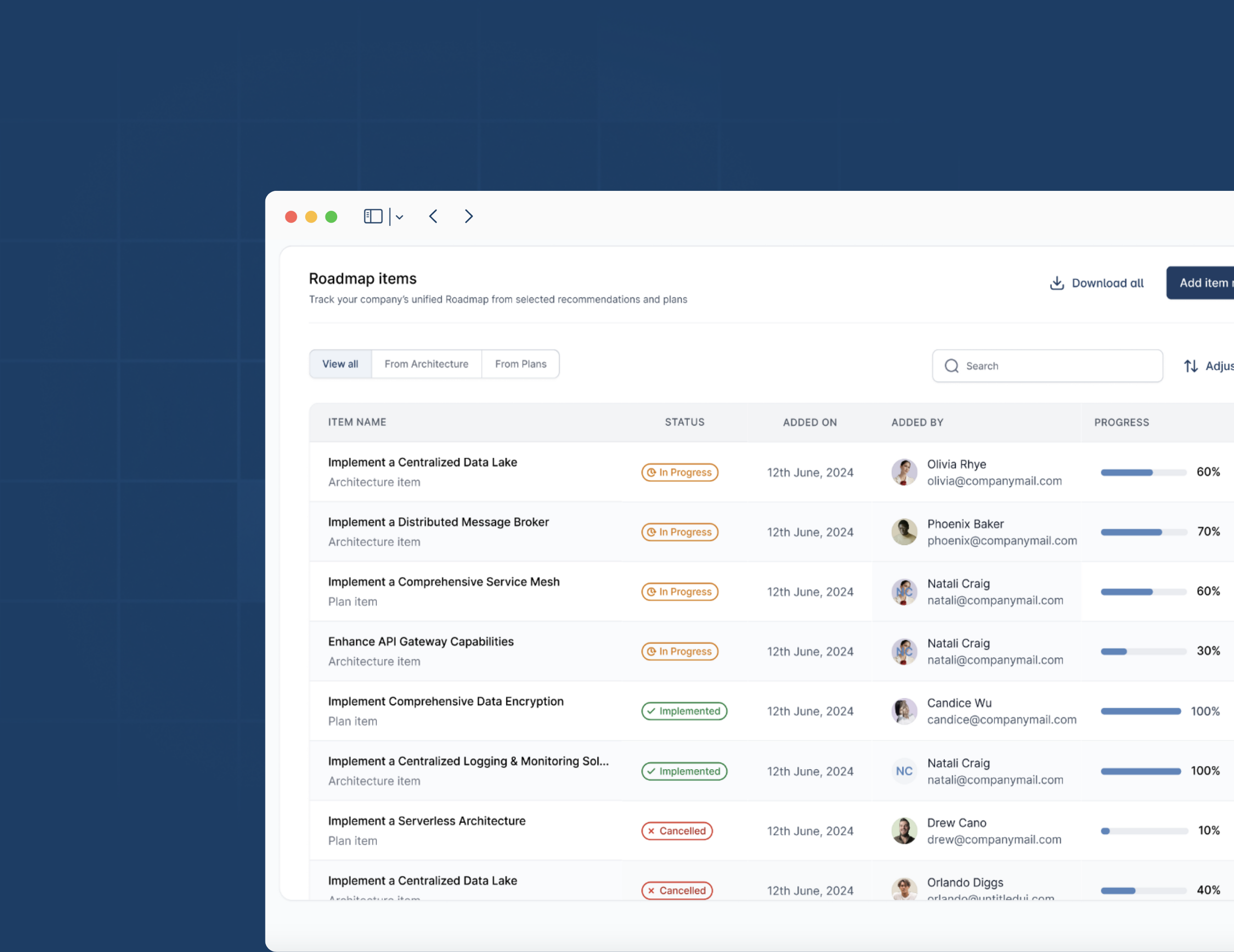Integrate Fast, Without Breaking What Works
Cut through architectural chaos post-acquisition. Catio gives you a unified, real-time view of systems across both orgs with AI and modeling tools to accelerate alignment and ROI.

Acquisitions are easy. Integration isn’t.
.png)
.png)
.png)
.png)

.png)
Align architecture faster and make the deal pay off.
From visibility to governance to consolidation, Catio turns technical complexity into tangible enterprise value.
See the whole system. Understand what to keep, merge, or lose.
and execution-ready plans.

.png)

Skip the Post-Merger Fog
Join teams who’ve turned siloed knowledge into architectural clarity
Resources
FAQ's
Most teams model both environments in under two weeks using Catio’s ingest, mapping, and AI-powered discovery.
Yes. The AI Copilot flags redundant components, risky connections, and opportunities to consolidate tied to value estimates.
Catio offers secure, federated views so each team sees only what’s relevant, with shared models and permissions.
We support architect- and analyst-driven workflows, but also allow deeper collaboration with engineers when needed.
Catio auto-updates models using source integrations and event-based refreshes, reducing reliance on manual diagrams or audits.
Yes. Catio supports RBAC, scoped data access, encrypted storage, and auditability — built for compliance-conscious teams.
Contact us for deployment options — we support enterprise-specific environments and data sensitivity requirements.



